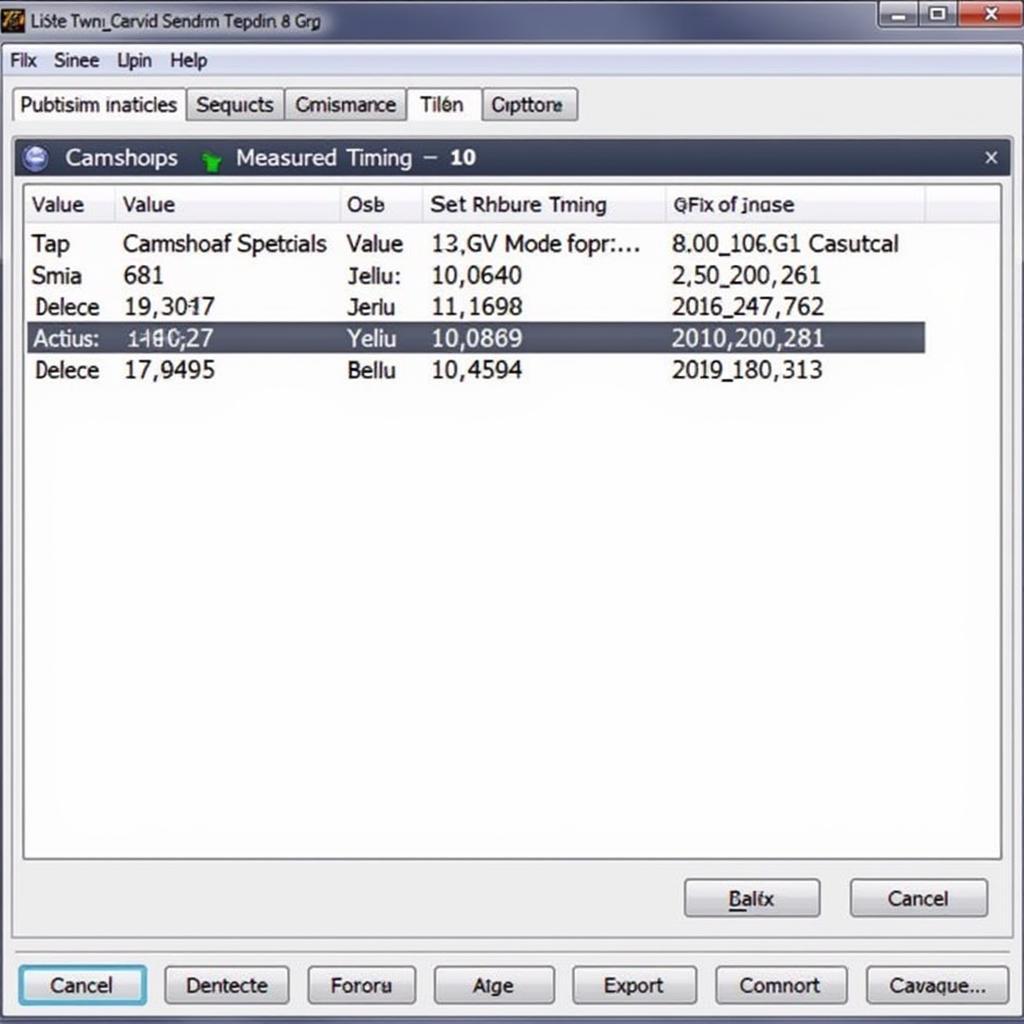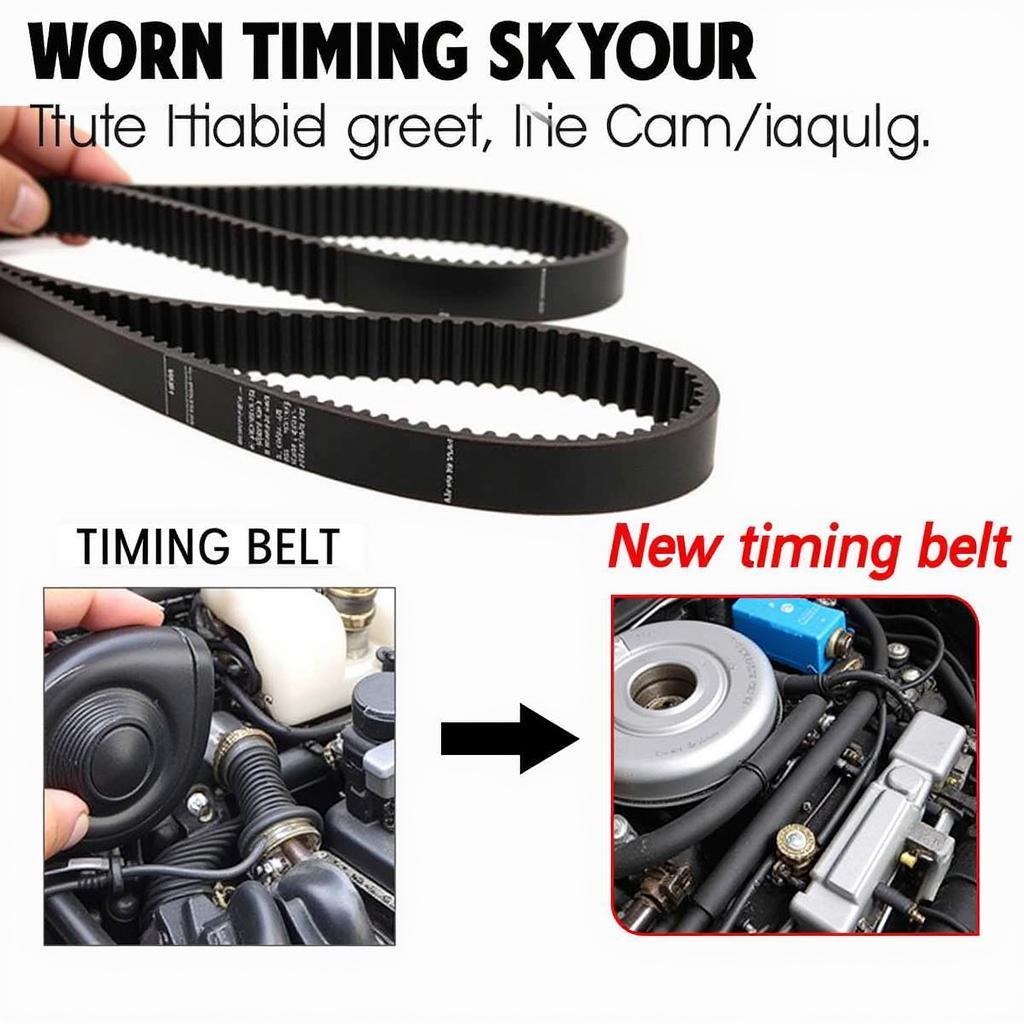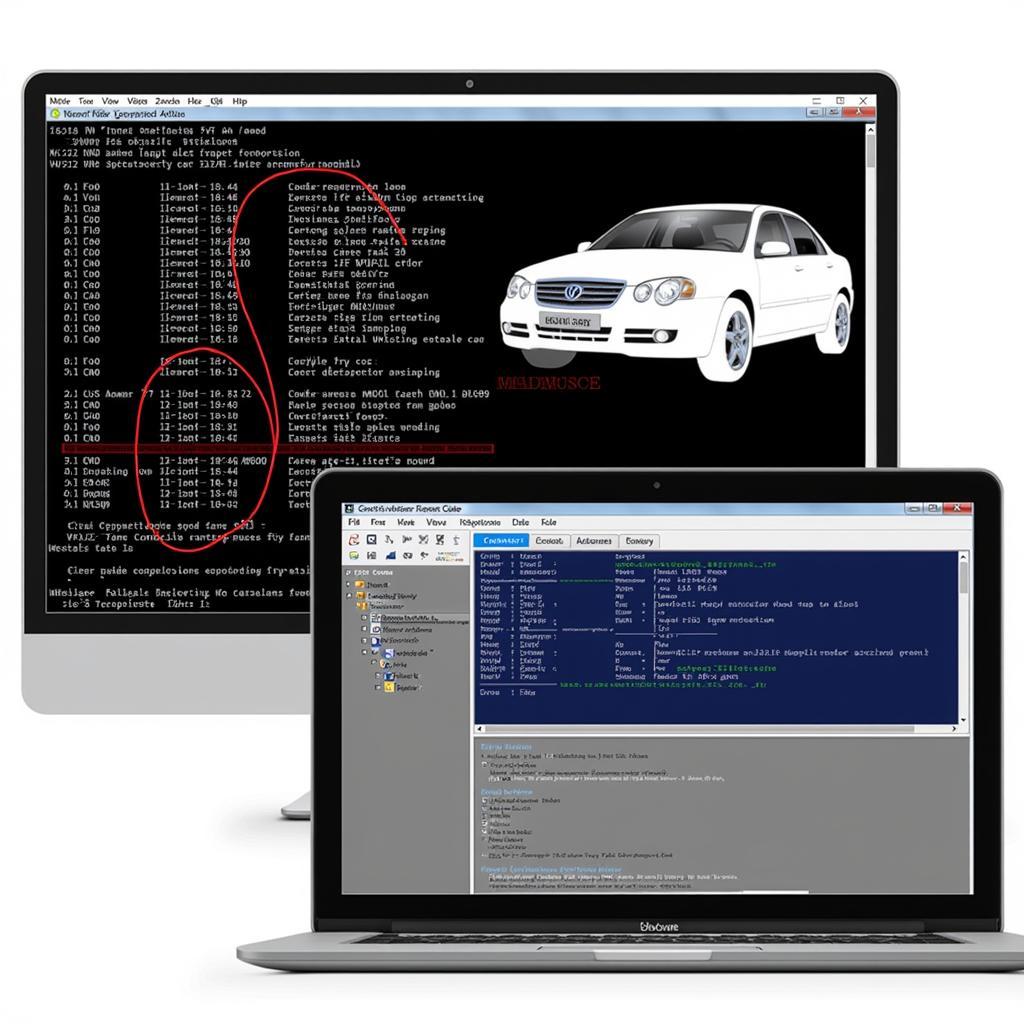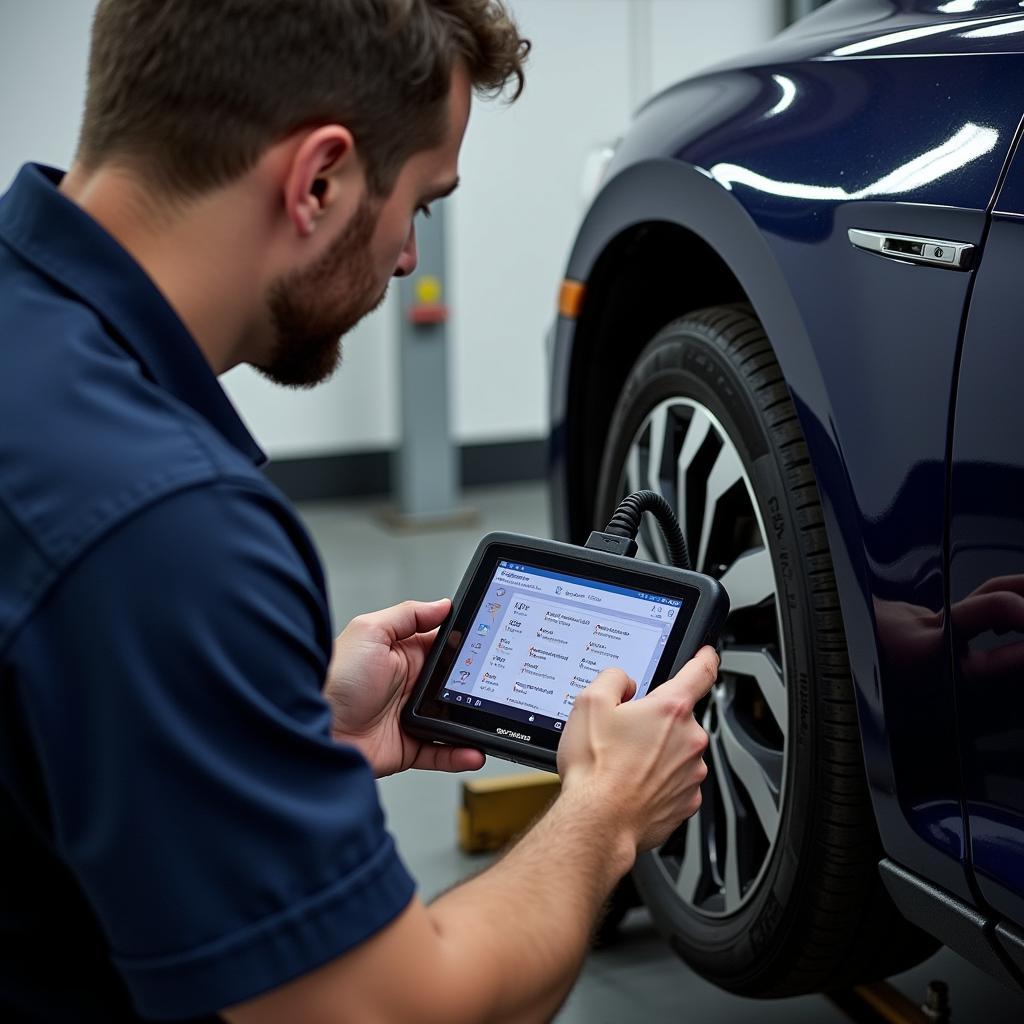VCDS cam timing is a critical aspect of vehicle maintenance, especially for Volkswagen, Audi, Seat, and Skoda models. Accurate camshaft timing ensures optimal engine performance, fuel efficiency, and emissions control. This comprehensive guide will delve into the intricacies of VCDS cam timing, providing valuable insights for car owners, mechanics, and automotive technicians.
Understanding VCDS and its Role in Cam Timing
VCDS (VAG-COM Diagnostic System) is a powerful diagnostic and programming tool for VAG vehicles. It allows users to access various engine control modules, including those responsible for camshaft timing. By interpreting data from these modules, VCDS can identify timing issues and help pinpoint their root causes. For example, an incorrect camshaft timing reading might indicate a worn timing belt or a faulty camshaft position sensor. Accurate vcds timing adjustment is crucial for maintaining optimal engine performance.
Common Symptoms of Incorrect Cam Timing
Incorrect cam timing can manifest in various symptoms, including poor engine performance, rough idling, difficulty starting, and reduced fuel efficiency. More severe cases can lead to engine misfires, increased emissions, and even catastrophic engine damage. Understanding these symptoms is the first step towards diagnosing and correcting camshaft timing issues.
How to Check Cam Timing with VCDS
Checking cam timing with VCDS involves accessing specific measuring blocks within the engine control module. The exact procedures vary depending on the engine code and model year. However, the general principle involves comparing specified values with actual readings. Deviations from these values indicate potential timing problems. For those looking for free resources, exploring how to check timing with VCDS free verizon could be a starting point, although professional guidance is always recommended.
Measuring Cam Timing with VCDS: A Step-by-Step Guide
- Connect the VCDS interface to the vehicle’s OBD-II port.
- Turn on the ignition without starting the engine.
- Launch the VCDS software and select the appropriate control module (usually labeled “Engine”).
- Navigate to the “Measuring Blocks” or “Advanced Measuring Values” section.
- Locate the measuring blocks related to camshaft timing. These may be labeled “Camshaft Adaptation,” “Synchronization,” or similar terms.
- Observe the displayed values and compare them with the specified values for your particular engine.
 Measuring Cam Timing with VCDS: Displayed Values
Measuring Cam Timing with VCDS: Displayed Values
Adjusting Cam Timing with VCDS
In some cases, minor cam timing adjustments can be performed using VCDS. This process involves changing adaptation values within the engine control module. However, it’s essential to understand that this procedure requires specialized knowledge and should only be attempted by experienced technicians. Incorrect adjustments can have detrimental effects on engine performance. Knowing how to measure timing mk5 jetta vcds provides a specific example for this platform.
VCDS Cam Timing Adjustment Precautions
- Always back up the existing control module coding before making any changes.
- Consult the vehicle’s repair manual for specific instructions and specifications.
- Exercise extreme caution when adjusting adaptation values. Small changes can have significant impacts.
- If unsure about any aspect of the procedure, seek professional assistance.
Common Causes of Cam Timing Issues
Several factors can contribute to cam timing problems. These include:
- Worn timing belt or chain
- Stretched timing belt or chain
- Faulty camshaft position sensor
- Damaged camshaft or crankshaft
- Worn or damaged tensioner or guide pulleys
 Causes of VCDS Cam Timing Issues: Worn Timing Belt
Causes of VCDS Cam Timing Issues: Worn Timing Belt
When to Seek Professional Help
While VCDS is a valuable tool for diagnosing cam timing issues, it’s crucial to recognize when professional assistance is necessary. If you’re uncomfortable performing the diagnostic or adjustment procedures, or if the problem persists despite your efforts, it’s best to consult a qualified mechanic or automotive technician. This is especially true for those dealing with models like the 1.9 TDI or 1.8T, where precision is paramount. You can refer to resources like 1.9 tdi camshaft timing vcds or 1.8t timing vcds for specific platform information.
Conclusion
VCDS cam timing is a critical aspect of engine performance and maintenance. Understanding how to use VCDS to diagnose and address timing issues can help prevent costly repairs and ensure optimal vehicle operation. However, it’s essential to exercise caution and seek professional help when needed. By mastering VCDS cam timing, you can maintain your vehicle’s health and performance for years to come.
FAQs
- What is VCDS? VCDS is a diagnostic and programming tool for VAG vehicles.
- How do I check cam timing with VCDS? By accessing specific measuring blocks within the engine control module.
- Can I adjust cam timing with VCDS? Minor adjustments are possible, but require expertise.
- What causes cam timing problems? Worn belts, faulty sensors, or damaged components.
- When should I seek professional help? If uncomfortable with procedures or the problem persists.
- What’s the importance of proper cam timing? It ensures optimal engine performance, fuel efficiency, and emissions control.
- Are there free VCDS versions available? Exploring how to check timing with vcds free verizon is an option, though professional guidance is recommended.
Need Help? Contact us via Whatsapp: +1 (641) 206-8880, Email: [email protected] or visit us at 276 Reock St, City of Orange, NJ 07050, United States. Our team is available 24/7. For further reading on specific platforms, explore resources like how to measure timing mk5 jetta vcds or 1.8t timing vcds.



